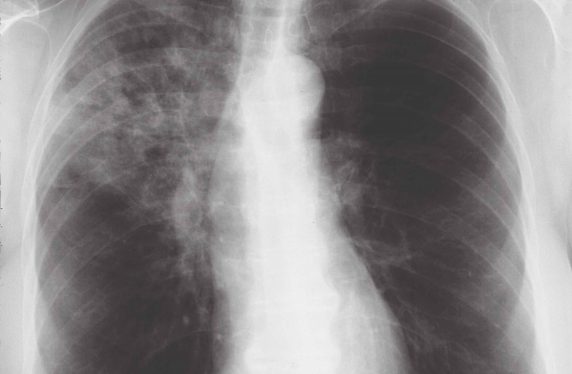Guideline of the month: Community-acquired pneumonia

NICE has published new guidance on antimicrobial prescribing in community-acquired pneumonia, along with a separate guideline on prescribing in hospital-acquired pneumonia, to replace recommendations made in its 2014 guideline on diagnosis and management.
The latest guideline includes recommendations on which antibiotics to prescribe and how quickly they should be started after a diagnosis is made.
Key points for GPs
- Assess the severity of infection using a CRB score and clinical judgment.
- Start antibiotics within four hours of diagnosis, or within one hour if the person has suspected sepsis.
- Give advice about possible adverse effects of the antibiotics, how long symptoms are likely to last and seeking medical help if symptoms rapidly worsen or do not improve within three days.
- In patients with moderate to severe infection, consider taking a sputum culture.
- Consider referring adults with community-acquired pneumonia to hospital if they have bacteria that are resistant to oral antibiotics or they cannot take oral antibiotics.
- Prescribing should be guided by your assessment of the severity of infection.
- If the infection is low severity, prescribe amoxicillin as first line.
- In patients with moderately severe infection, prescribe amoxicillin with clarithromycin, or erythromycin if the patient is pregnant.
- In patients with high-severity infection, prescribe co-amoxiclav with clarithromycin, or erythromycin if the patient is pregnant.
- Prescribe levofloxacin for patients with high-severity infection and amoxicillin allergy.
- Stop antibiotic treatment after five days unless microbiological results suggest a longer course is needed, or the person is not clinically stable.
- Consider changing to a narrower-spectrum antibiotic if indicated by microbiological tests
- When prescribing levofloxacin, consider the safety issues highlighted by the MHRA warning of rare reports of disabling musculoskeletal and neurological side-effects.
Implications for GPs
Antibiotics should be prescribed within four hours of diagnosis, or one hour if sepsis is suspected. This may be difficult in primary care settings where access to pharmacy is limited or in out-of-hours settings.
GPs must use their clinical judgment alongside the CRB score to decide whether patients can be managed in the community or should be admitted, and to safety-net patients in case of deterioration.
As well as the severity of infection, when choosing an antibiotic GPs will need to take into account the patient’s risk of complications and recent antibiotic use, and local antimicrobial resistance data.
The guideline
NICE. NG138 Pneumonia (community-acquired): antimicrobial prescribing. London; NICE: 2019.
Visit Pulse Reference for details on 140 symptoms, including easily searchable symptoms and categories, offering you a free platform to check symptoms and receive potential diagnoses during consultations.













